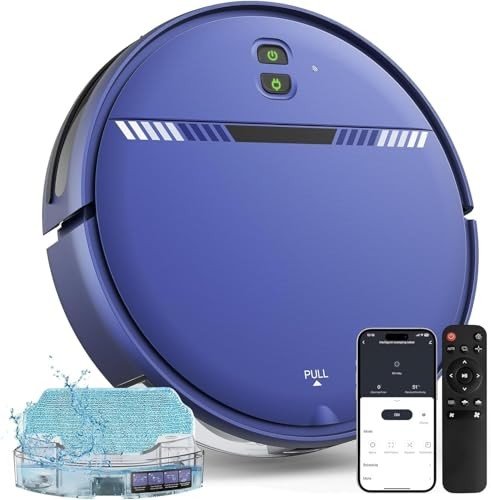The Rise of Automatic Hoover Robots: Revolutionizing Home Cleaning
In today's hectic world, technology continues to reshape the way we live and work. Amongst the innovations making a considerable effect on households are automatic hoover robots, typically referred to just as robot vacuums. These intelligent cleaning devices guarantee not just convenience but also effectiveness in keeping clean living spaces. Full Review explores the advancement, advantages, restrictions, and future of automatic hoover robots.
The Evolution of Automatic Hoover Robots
The idea of automated cleaning devices dates back to the early 20th century, but it wasn't up until the development of innovative robotics, sensors, and expert system that robot vacuums ended up being viable. The following table shows essential milestones in the development of automatic hoover robots:
| Year | Turning point |
|---|---|
| 1996 | The very first automatic vacuum is presented by Electrolux. |
| 2002 | iRobot releases the Roomba, a consumer-grade robot vacuum. |
| 2010 | Intro of innovative mapping technology and accident sensing units. |
| 2016 | Robotic vacuums begin incorporating with smart home systems. |
| 2020 | Increased adoption of AI and artificial intelligence for much better cleaning algorithms. |
How Automatic Hoover Robots Work
Automatic hoover robots run utilizing a mix of sensors and algorithms to navigate family spaces. Below are key components that contribute to the performance of these makers:
- Sensors: Lidar (light detection and ranging), infrared, and cliff sensing units assist the robot map the location and avoid challenges.
- Mapping Technology: Many models now offer sophisticated mapping capabilities, making it possible for effective navigation through spaces, determining high-traffic areas, and remembering the layout of your home.
- Cleaning Modes: Most robot vacuums include numerous cleaning modes, consisting of area cleaning, edge cleaning, and systematic navigation.
- App Connectivity: Many contemporary designs enable control through smart device apps, allowing users to arrange cleansings and personalize settings from another location.
Benefits of Automatic Hoover Robots
Automatic hoover robots use a wide variety of advantages, making them appealing to a considerable variety of consumers. Here are some engaging advantages:
- Time-Saving: Users can schedule cleansings and multitask while the robot does the work.
- Consistent Cleaning: Regularly set up cleansings guarantee that homes stay neat.
- Availability: Robots can clean up hard-to-reach areas like under furniture without manual effort.
- Smart Features: Integration with smart home systems enables voice control and more sophisticated scheduling options.
Limitations of Automatic Hoover Robots
Despite their advantages, automatic hoover robots have specific downsides that users need to think about:
- Battery Life: Most robot vacuums require charging, which can disrupt cleaning cycles.
- Suction Power: While effective for light particles, they may battle with deeply embedded dirt or thick carpets.
- Maintenance: Regular cleaning of brushes and filters is essential to maintain efficiency.
- Expense: High-end designs can be pricey, which might be a barrier for some consumers.
Future of Automatic Hoover Robots
As technology continues to advance, there are numerous amazing prospects for automatic hoover robots. Here's what to anticipate in the coming years:
- Enhanced AI: Improved machine learning algorithms could permit robots to adapt their cleaning methods based on the particular design and dirt levels in a home.
- Multi-Functionality: Future designs may not just vacuum but also mop, disinfect surfaces, and even supply real-time environmental tracking.
- Combination with Home Automation: Increased interoperability with various smart home systems will likely improve control and performance.
- Sustainability: Future variations may concentrate on environmentally friendly features, including biodegradable components and energy-efficient operations.
Often Asked Questions (FAQs)
1. How typically should I run my automatic hoover robot?
- It mainly depends on your lifestyle, however running it a few times weekly can assist maintain a clean home, particularly in high-traffic locations.
2. Can I use a robot vacuum on carpets?
- Many robot vacuums are designed to deal with carpets, but performance might vary depending upon the density and thickness. Always check the producer's requirements.
3. Do robot vacuums work well with family pet hair?
- The majority of contemporary models are equipped with brushes and strong suction power particularly developed to handle animal hair successfully.
4. Can I set up cleansings from another location?
- Yes, lots of robot vacuums come with smart device apps that allow users to schedule cleansings and control features from anywhere.
5. How do best budget robot vacuum preserve my robot vacuum?
- Regularly tidy the brushes, empty the dustbin, and replace filters according to the producer's suggestions to make sure optimum efficiency.
Automatic hoover robots represent a considerable shift in the method households approach cleaning. By combining advanced technology with user-friendly features, these gadgets not just provide convenience however likewise enhance effectiveness in preserving clean home. As advancements continue, the future of automatic hoover robots looks promising, potentially offering a lot more intelligent solutions for modern homes.
In a world where time is of the essence, the function of technology in home care is becoming progressively vital, making automatic hoover robots an excellent investment for those wanting to simplify their lives while guaranteeing tidiness.

